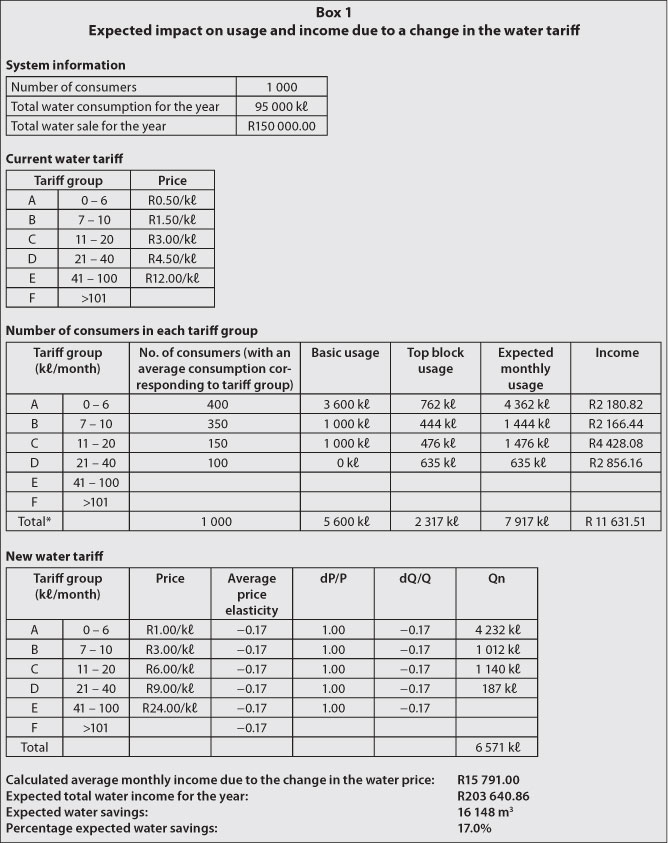ニュース How do you calculate tariffs?. トピックに関する記事 – How are tariffs calculated

The simple way to calculate a trade-weighted average tariff rate is to divide the total tariff revenue by the total value of imports. Since these data are regularly reported by many countries, this is a common way to report average tariffs.The tariff is determined on a Cost Plus basis by the State Commission as per tariff regulations. Cost Plus determination of tariff implies that the tariff determined under this process recovers all the cost of the Distribution Licensee and adds a specific amount as a return.
- Cost of call = minimum charge + (Rands per second) × (number of seconds) = R0,570 + (R0,00700) × 1 000 =R0,570 + R7,00 =R7,57.
- 1 000 seconds ÷ 60 seconds ≈ 16 minutes.

What is an example of a tariff rateAn example of a tariff would be a tax on a good imported from another country. For example, a 3% tariff on corn would be a 3% tax added to the cost of corn paid by any domestic importer of corn from a foreign country.
What is the percentage of tariffs
The United States currently has a trade-weighted average import tariff rate of 2.0 percent on industrial goods. One-half of all industrial goods imports enter the United States duty free.Tariff revenue change on a given import flow is computed simply as the final ad-valorem tariff multiplied by the final import value minus the initial ad-valorem tariff multiplied by the initial import value.
What is normal tariff rate
Normal Tariff means the rates of duty and the exemptions from duty specified in the column headed “Normal Tariff” or “Import Duty” in the Tariff and includes any modification or amendment of the Normal Tariff made after the commencement of this Act.

The four types of tariffs are ad valorem tariffs, specific tariffs, compound tariffs, and mixed tariffs. An importer has to pay a 10.6% tax on a $56,000 car that they are importing.
What is the simple tariff rate
1) Simple Tariff: In this type of tariff, a fixed rate is applied for each unit of energy consumed. It is also known as a uniform tariff. The rate per unit of energy does not depend upon the quantity of energy a consumer uses.Meaning of revenue tariff in English
a tax on imported goods that has the purpose of making money for the country that imports them: If a country imposes the maximum revenue tariff, can it be expected to improve the welfare of its people Compare.As the tariff is increased from zero, imports fall at a slower rate than the increase in the tariff rate, hence revenue rises. Eventually, imports begin to fall faster than the tariff rate rises, and tariff revenue declines. The tariff rate that generates the highest tariff revenue is called the maximum revenue tariff.

Now for more context, U.S. tariffs by product:
Average U.S. tariff for all imported goods: 1.4 to 1.6 percent. Lowest tariffs:0 percent. Some 54 percent of all imported goods face no tariff. Highest tariffs: 8.5 to 67.2 percent for clothing and shoes.
What is the most common type of tariffThe most common is an ad valorem tariff, which means that the customs duty is calculated as a percentage of the value of the product. Many countries' tariff schedules also include a variety of non ad valorem tariffs.
Who has the lowest tariffsthe U.S.
Today, the U.S. applies a weighted average tariff of 1.6 percent on its imports according to the World Bank and this is one of the lowest rates worldwide, equivalent to the EU and similar to Japan.
What are the 4 types of tariffs
The four types of tariffs are ad valorem tariffs, specific tariffs, compound tariffs, and mixed tariffs. A positive effect of a tariff is that it benefits domestic producers by keeping domestic prices high.

Answer and Explanation:
A tariff is an effective way of raising revenue when imports that are subject to revenue tariffs usually have a lower price elasticity of demand. Revenue tariffs do not usually deter imports. However, they make it more costly for producers to import products.A tariff is a type of tax levied by a country on an imported good at the border. Tariffs have historically been a tool for governments to collect revenues, but they are also a way for governments to try to protect domestic producers. As a protectionist tool, a tariff increases the prices of imports.DEFINITIONS. a. TARIFF SIZES ARE SIZES FRO WHICH THE FREQUENCY OF ISSUE JUSTIFIES PROCUREMENT FOR. STOCKAGE WITHIN THE SUPPLY SYSTEM.
